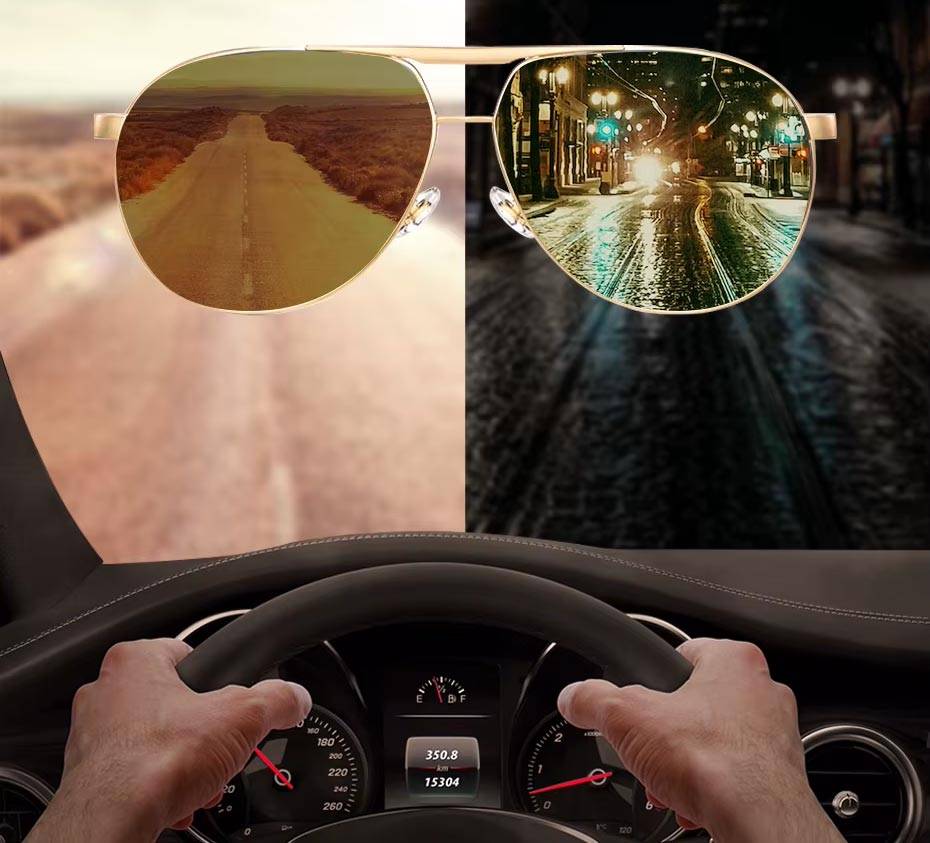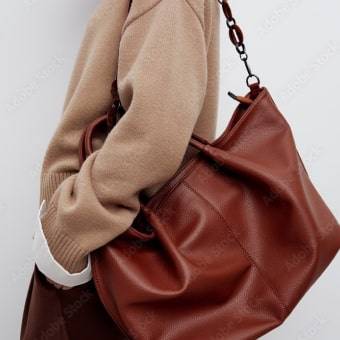The Science, Benefits, and Truth Behind Night Vision Glasses for Driving

Introduction
Driving at night can feel daunting for many of us. The glare of oncoming headlights, poorly lit roads, and challenging weather conditions like fog or rain can significantly affect our ability to see clearly and drive safely. Night vision glasses, a popular eyewear solution, promise to reduce glare, enhance contrast, and make nighttime driving a more comfortable experience. But how effective are they, and what should you know before investing in a pair? In this comprehensive guide, we will dive into the science, research, and benefits of night vision glasses while showcasing why they’re a valuable tool for anyone driving after dark.

Table of Contents
What Are Night Vision Glasses?

Night vision glasses are specialized eyewear equipped with yellow or amber-tinted lenses. Their primary function is to filter out specific wavelengths of light, particularly blue light, which can scatter easily and create glare. By blocking blue light and increasing contrast, these glasses can help you see more clearly in certain low-light situations.
Key Features of Night Vision Glasses:
- Blue Light Reduction: Filters out harsh blue wavelengths from headlights and streetlights.
- Enhanced Contrast: Makes road markings, lane dividers, and signs stand out.
- Polarization: Minimizes glare from reflective surfaces, such as wet roads.
- UV400 Protection: Protects eyes from harmful ultraviolet rays during daytime use.
While these features sound promising, the effectiveness of night vision glasses depends on specific driving conditions and individual factors, such as light sensitivity and eye health.
The Science Behind Night Vision Glasses
The key technology behind night vision glasses is the tinted lens, usually in yellow or amber shades. Here’s how they work:
- Blue Light Filtering: Blue light has a short wavelength and scatters more easily than other colors in the visible spectrum. This scattering reduces visual clarity, especially in low-light environments. By filtering out blue light, night vision glasses create a more focused and contrast-rich view.
- Polarized Lenses: Many night vision glasses include polarization, which reduces glare caused by light reflecting off surfaces like wet roads or shiny car hoods. Polarization blocks horizontally reflected light, allowing drivers to see more clearly in challenging lighting conditions.
- Contrast Enhancement: The yellow tint enhances contrast, making objects like road signs, lane dividers, and even pedestrians stand out against dimly lit backgrounds. This feature is particularly useful in foggy, rainy, or snowy conditions.
Research on Night Vision Glasses
Several studies have evaluated the effectiveness of night vision glasses for driving, with mixed results. Let’s explore some key findings:
1. The 2019 Driving Simulator Study:
A study published in JAMA Ophthalmology assessed 22 participants driving in a controlled simulator, both with and without yellow-tinted night vision glasses. The results showed no measurable improvement in detecting pedestrians or objects. However, participants reported a subjective sense of comfort when wearing the glasses.
2. Blue Light and Eye Strain:
Research confirms that blue light can contribute to visual discomfort, particularly when exposed to LED or HID headlights at night. Night vision glasses that filter blue light can reduce this strain, improving comfort during nighttime driving.
3. Fog and Snow Conditions:
Studies on yellow-tinted lenses have found that they can improve contrast and visibility in conditions like fog or snow, where blue light reflections are more pronounced. However, their effectiveness diminishes in complete darkness.
4. Subjective Comfort vs. Objective Performance:
While objective studies suggest limited impact on visibility, many drivers report that night vision glasses reduce their sensitivity to glare and help them feel more confident behind the wheel.
Who Can Benefit Most from Night Vision Glasses?

While night vision glasses aren’t a one-size-fits-all solution, they can provide significant benefits for certain individuals and driving scenarios:
- Light-Sensitive Drivers: Individuals sensitive to LED and HID headlights often find relief with night vision glasses, as the yellow tint reduces the intensity of harsh blue light.
- Drivers in Foggy or Snowy Conditions: Yellow-tinted lenses are particularly effective in weather conditions where blue light reflections can obscure visibility.
- Elderly Drivers: Age-related changes in vision, such as cataracts or reduced contrast sensitivity, can make night driving difficult. While night vision glasses don’t address underlying eye conditions, they can improve overall comfort.
- Professional Drivers: Truck drivers and others who spend long hours on the road benefit from reduced glare and improved focus, especially during extended night shifts.
Common Myths About Night Vision Glasses
Despite their popularity, night vision glasses are often misunderstood. Let’s debunk some common myths:
Myth 1: They Make Roads Brighter
Reality: Night vision glasses don’t brighten your view. In fact, they reduce the total amount of light entering your eyes. However, they create the perception of brightness by enhancing contrast and reducing glare.
Myth 2: They Replace Prescription Glasses
Reality: If you require prescription lenses, night vision glasses won’t correct refractive errors. Consider prescription night vision glasses or clip-ons for compatibility with your existing eyewear.
Myth 3: They Work in Complete Darkness
Reality: Night vision glasses are ineffective in pitch-black conditions. They rely on ambient light, such as streetlights or headlights, to enhance visibility.
Practical Tips for Safer Night Driving
Night vision glasses can complement other measures to improve your nighttime driving experience. Here are some practical tips:
- Clean Your Windshield: Dirt, smudges, and streaks amplify glare from headlights. Regularly clean your windshield inside and out.
- Upgrade Your Headlights: Consider switching to brighter, more efficient bulbs for improved road visibility.
- Adjust Dashboard Lighting: Bright dashboard lights can create reflections on your windshield. Dim them to reduce distractions.
- Take Breaks: Fatigue impairs your ability to focus and process visual information. Take regular breaks on long drives.
- Visit Your Eye Doctor: If you struggle with night vision, consult an optometrist to rule out underlying conditions like cataracts or macular degeneration.
Introducing CAPONI Night Vision Driving Glasses
At Jwlraddicts.com, we offer the CAPONI Night Vision Driving Glasses, designed to address the challenges of nighttime driving with style, safety, and comfort. Here’s why they stand out:
Key Features:
- Yellow Photochromic Lenses: Adapt to varying light conditions, ensuring optimal visibility at dusk, dawn, and night.
- Advanced Polarization: Reduces glare from LED headlights, wet roads, and other reflective surfaces.
- UV400 Protection: Shields your eyes from harmful UVA and UVB rays, making these glasses suitable for day and night use.
- Stylish Design: The modern square frame complements various face shapes, combining functionality with fashion.
- Lightweight and Durable: Weighing only 25g, these glasses are comfortable for extended wear and built to last.
Who Are CAPONI Glasses For?
- Everyday commuters looking for a safer nighttime driving experience.
- Light-sensitive individuals seeking glare reduction.
- Drivers in snowy, foggy, or rainy conditions.
Real-Life Benefits from Drivers Like You
Many of our customers have shared how CAPONI Night Vision Glasses have transformed their driving experience:
- “I used to avoid driving at night because of glare from LED headlights. CAPONI glasses have made a world of difference!”
– Amanda L. - “I drive in snowy conditions frequently, and these glasses improve visibility significantly. Highly recommended!”
– Michael T.
Why Buy Night Vision Glasses from Jwlraddicts.com?
Shopping at Jwlraddicts.com comes with several advantages:
- Competitive Pricing: Affordable luxury without compromising quality.
- Free Shipping and Returns: Enjoy a hassle-free shopping experience with worldwide shipping.
- Quality Assurance: Every product is carefully curated to meet the highest standards of performance and style.
- Customer-Centric Approach: Our dedicated support team ensures a seamless experience from purchase to delivery.
The Verdict: Do Night Vision Glasses Work?
The effectiveness of night vision glasses depends on your specific needs and driving conditions. While they may not provide magical solutions in total darkness, they can significantly improve comfort, reduce glare, and enhance contrast in low-light scenarios.
If you struggle with nighttime driving, especially due to glare or light sensitivity, night vision glasses like CAPONI offer a practical and stylish solution. Paired with safe driving practices and proper eye care, these glasses can make your journeys safer and more enjoyable.





















Leave a comment
You must be logged in to post a comment.